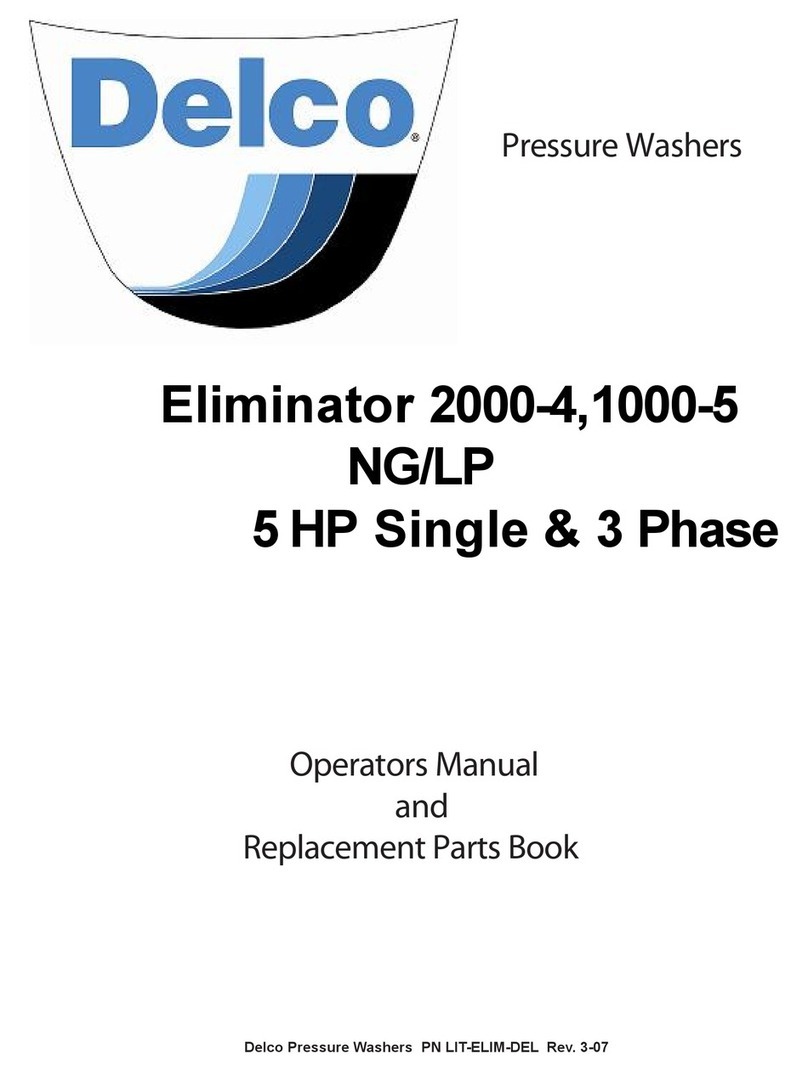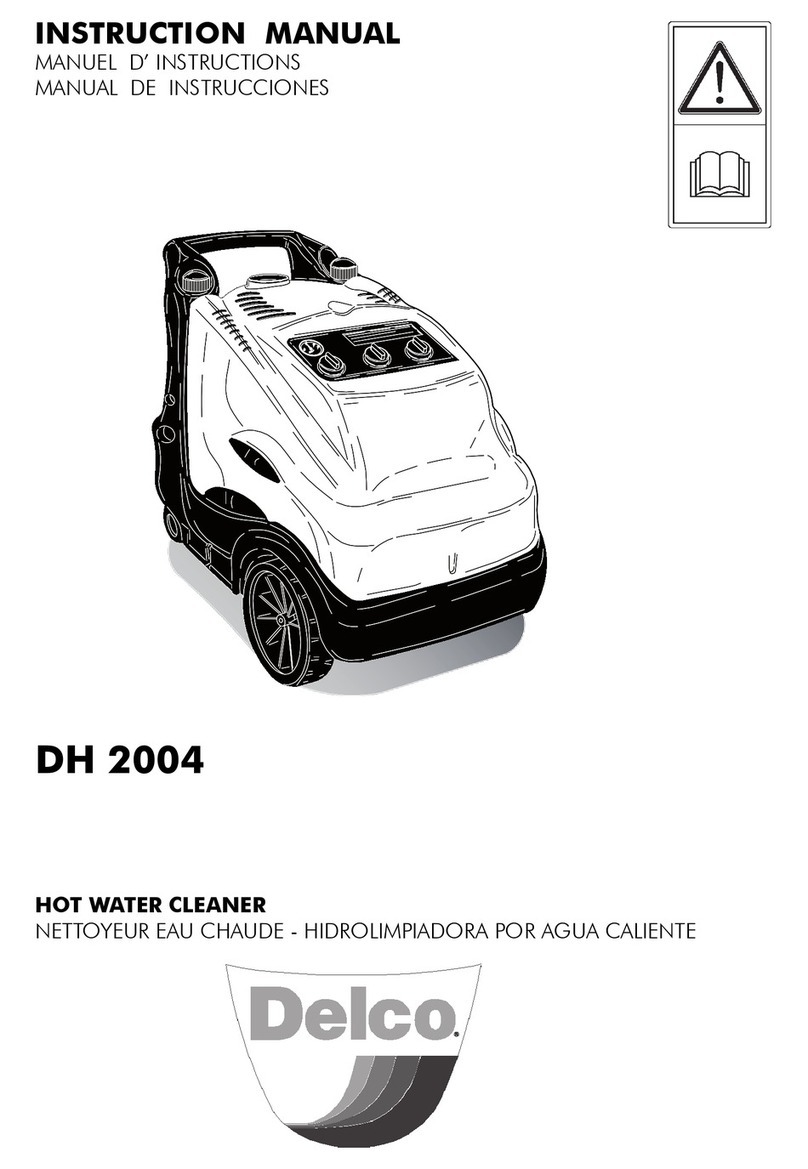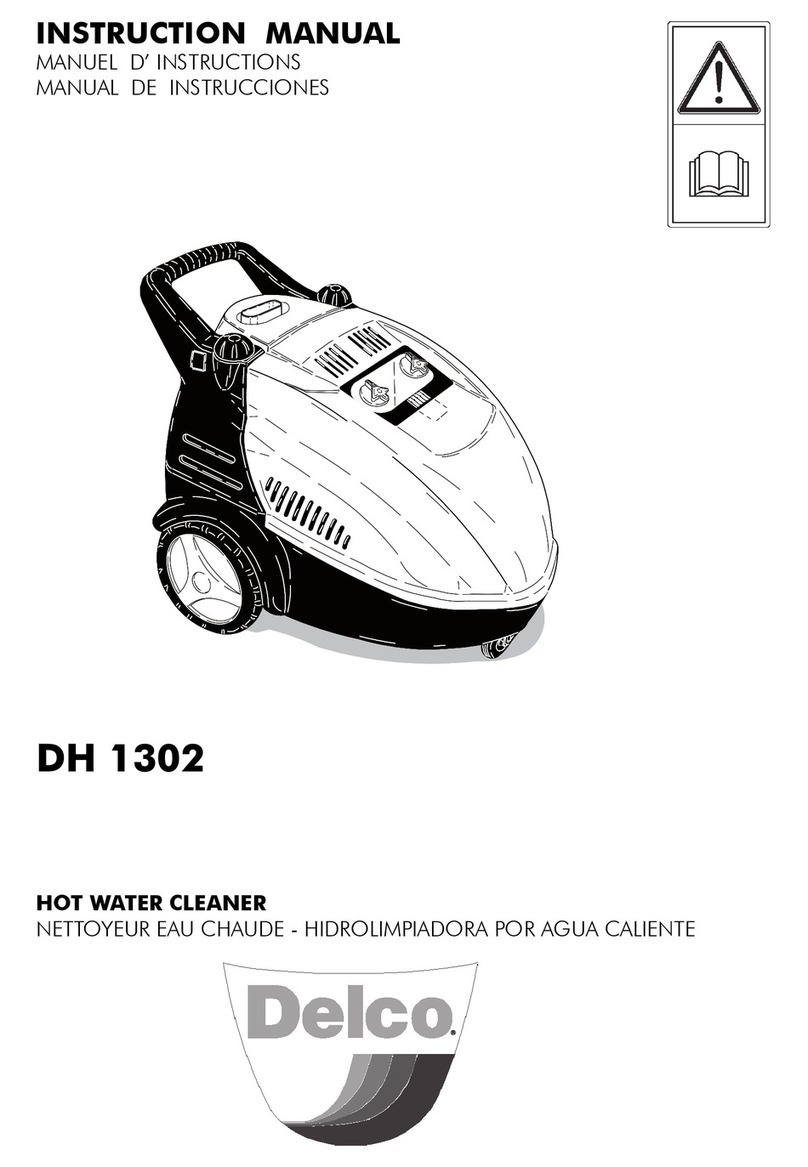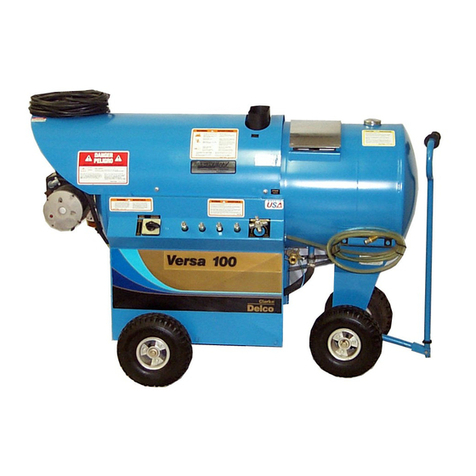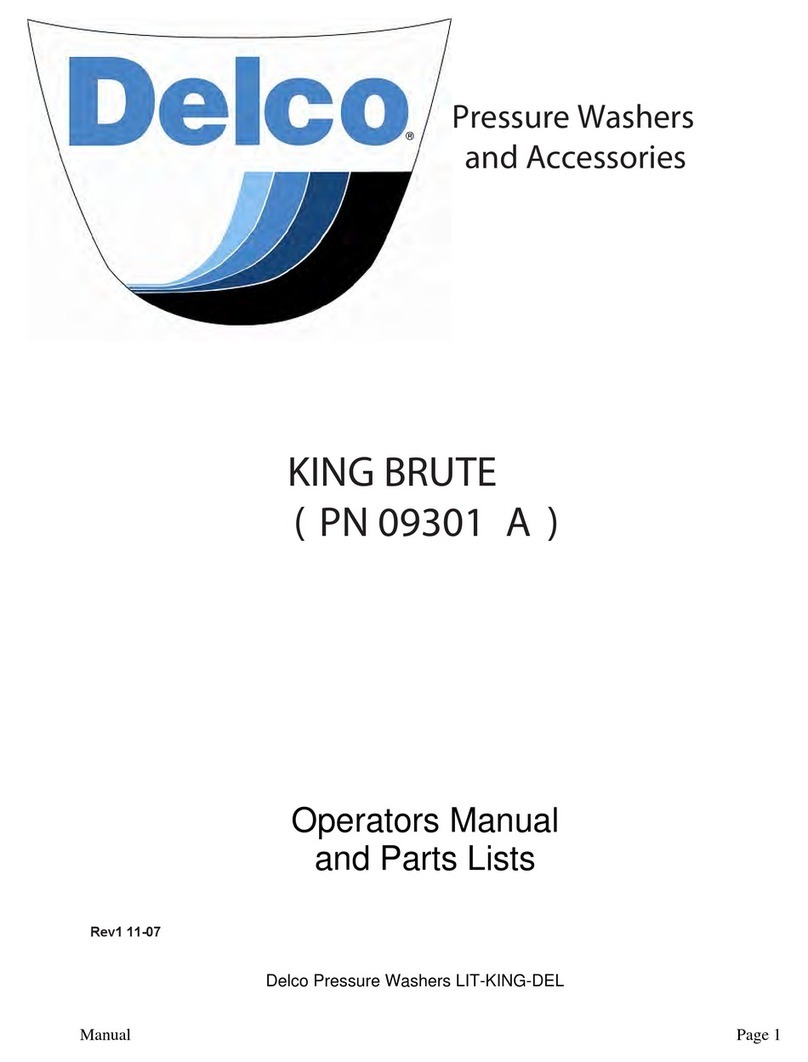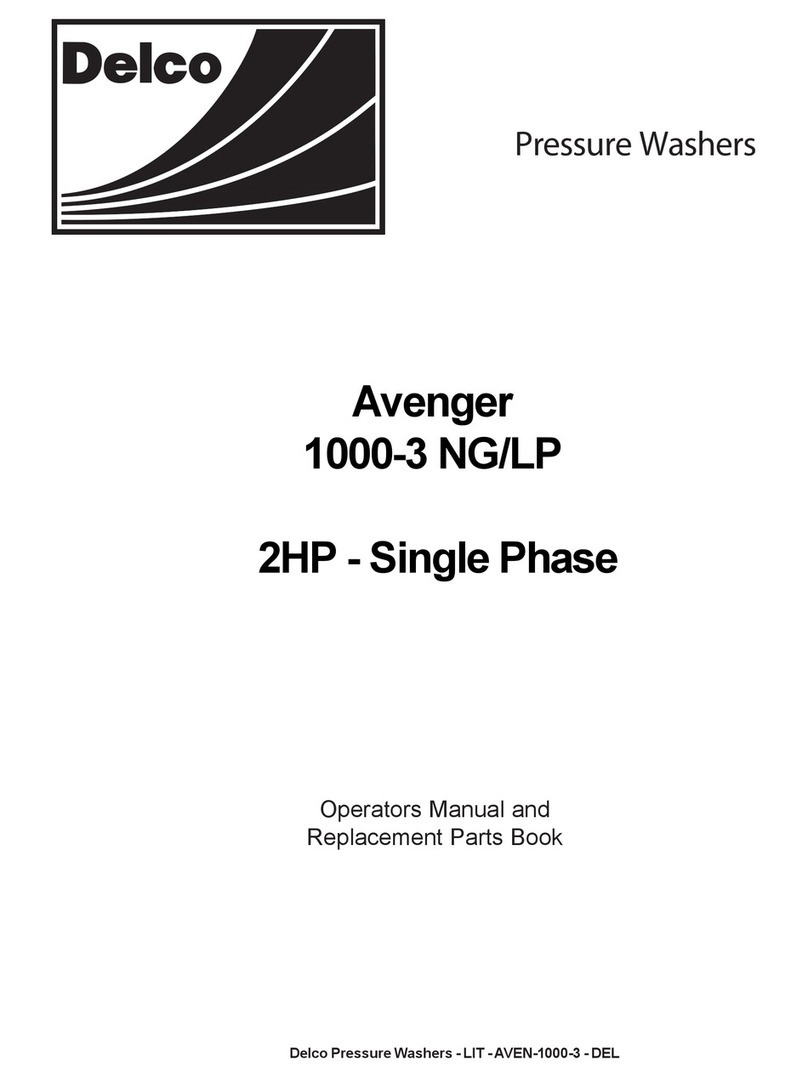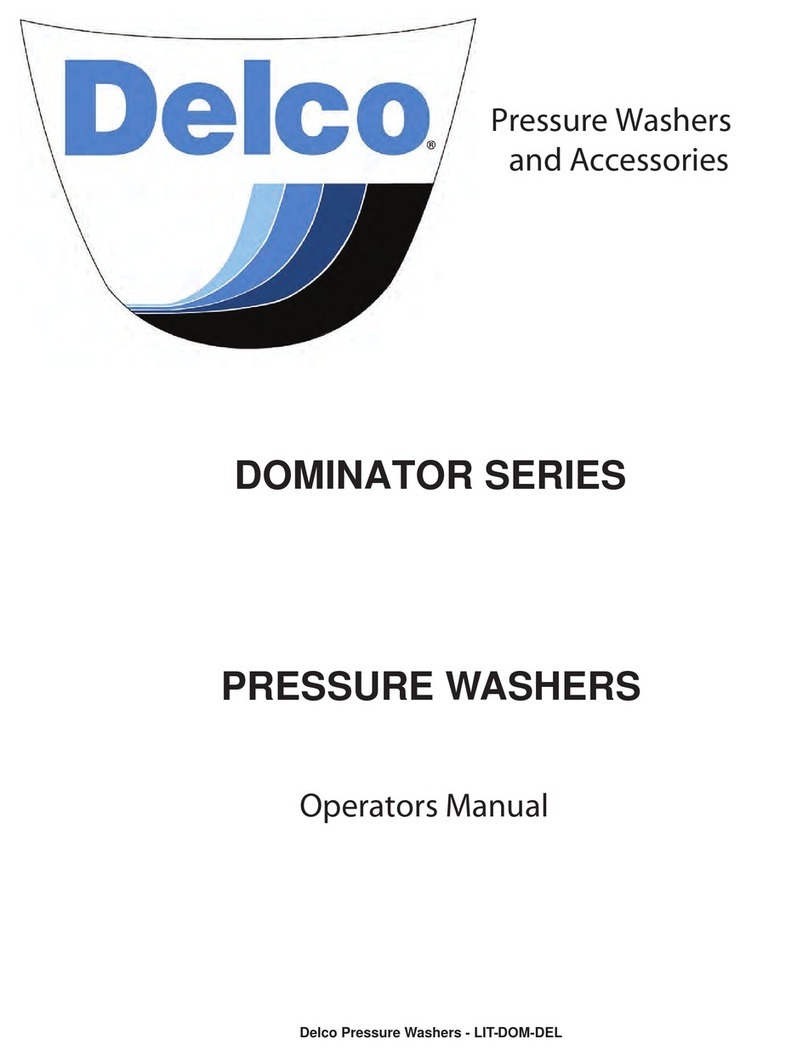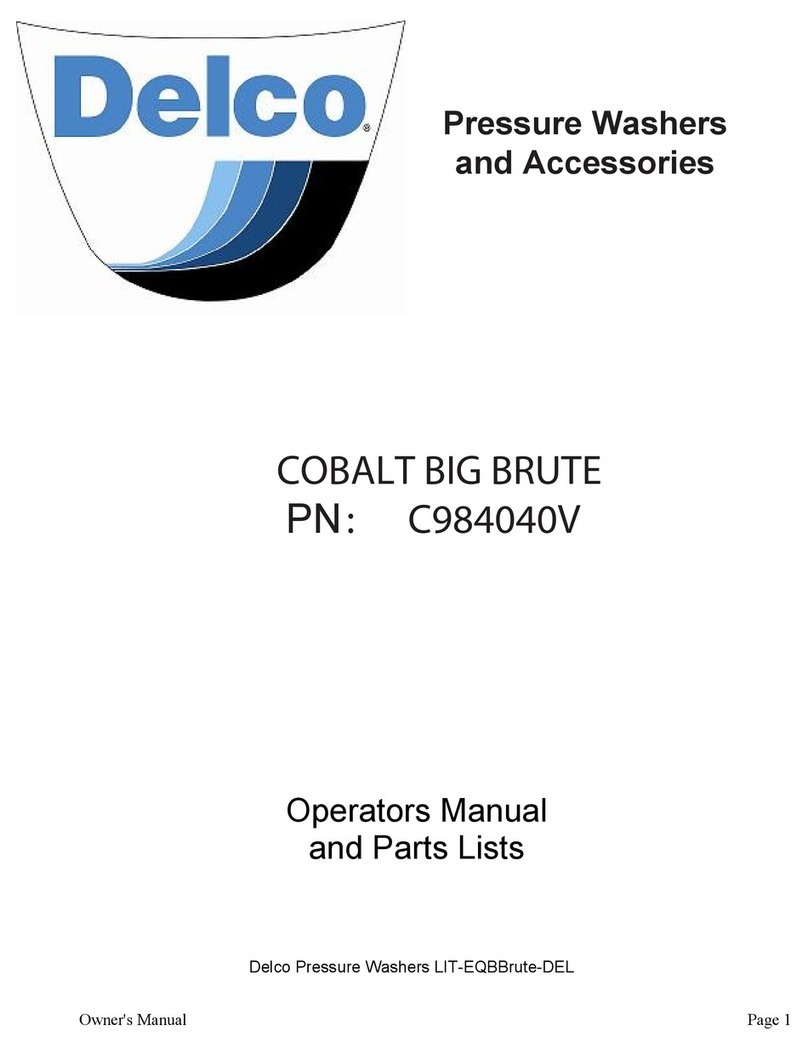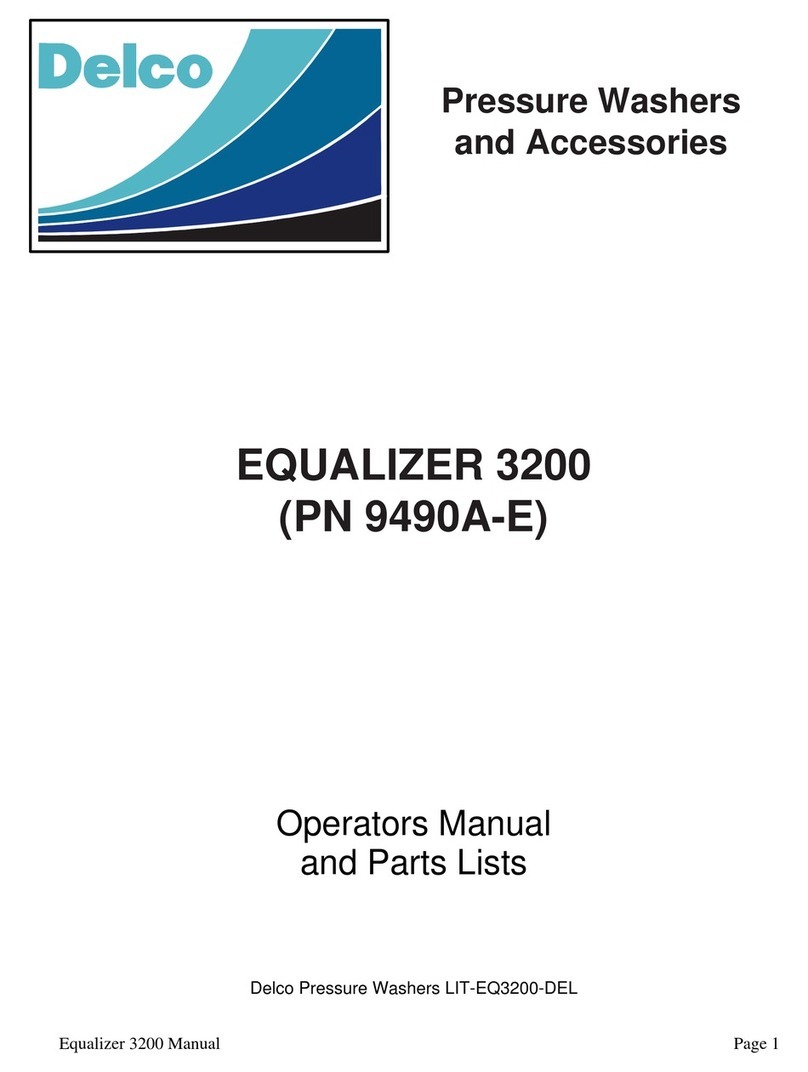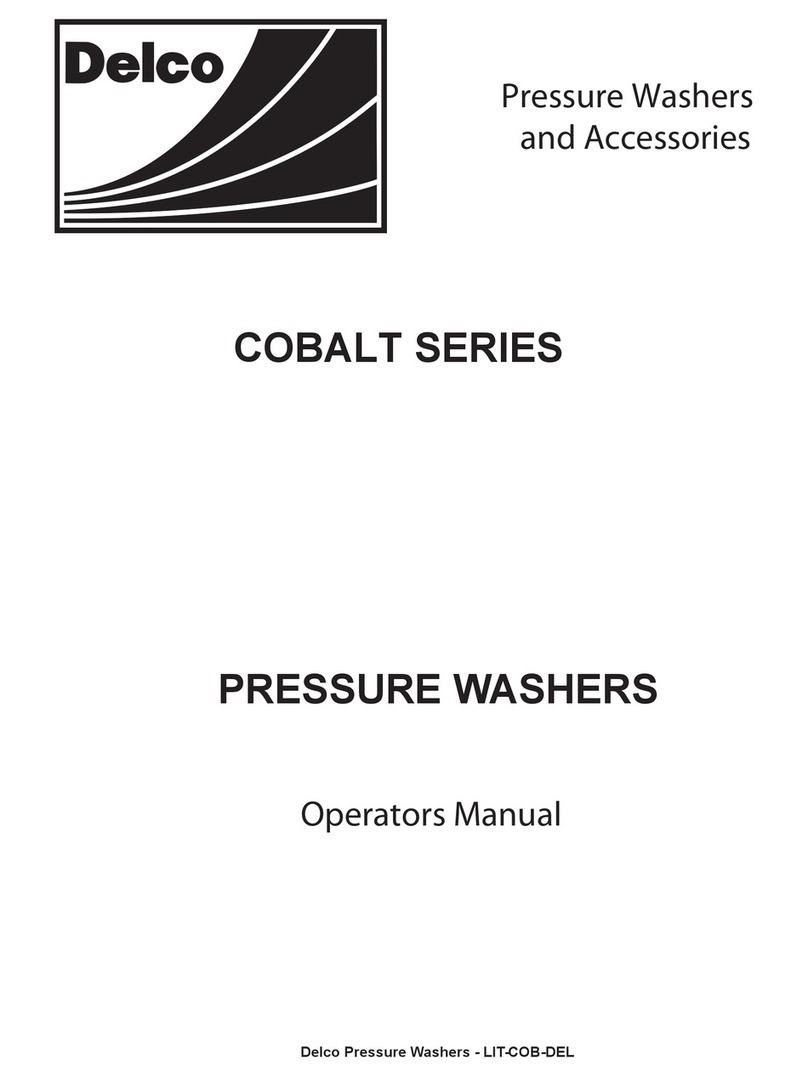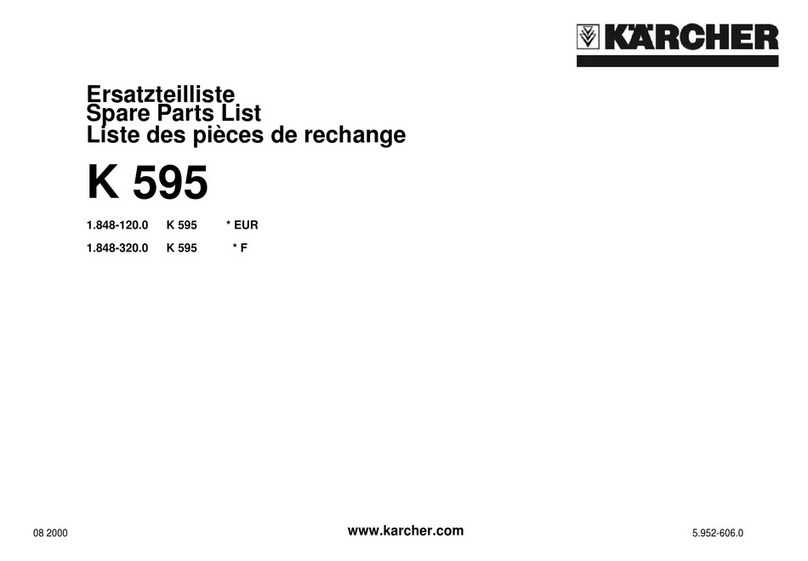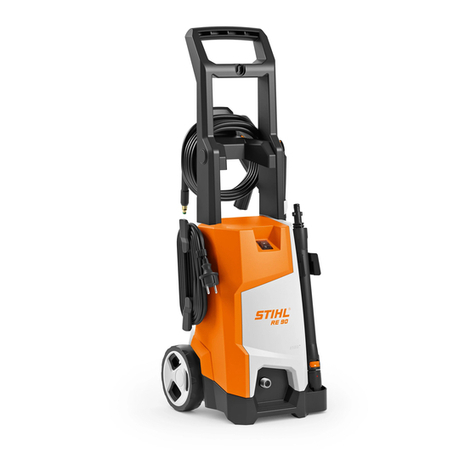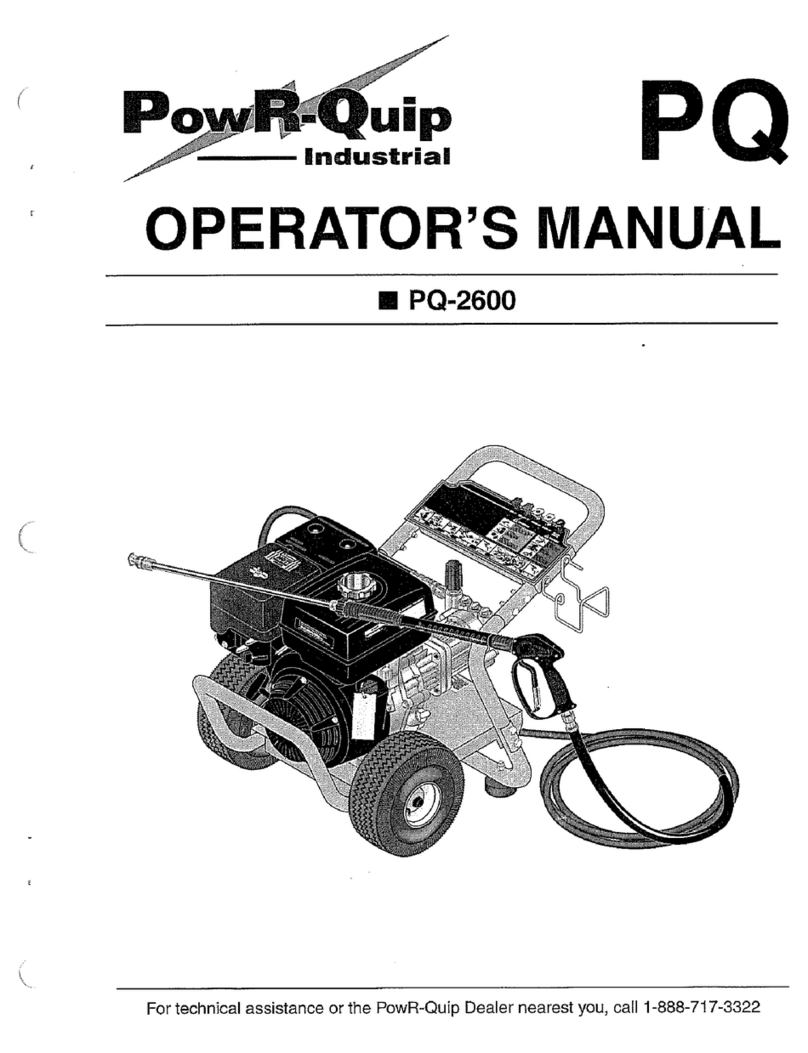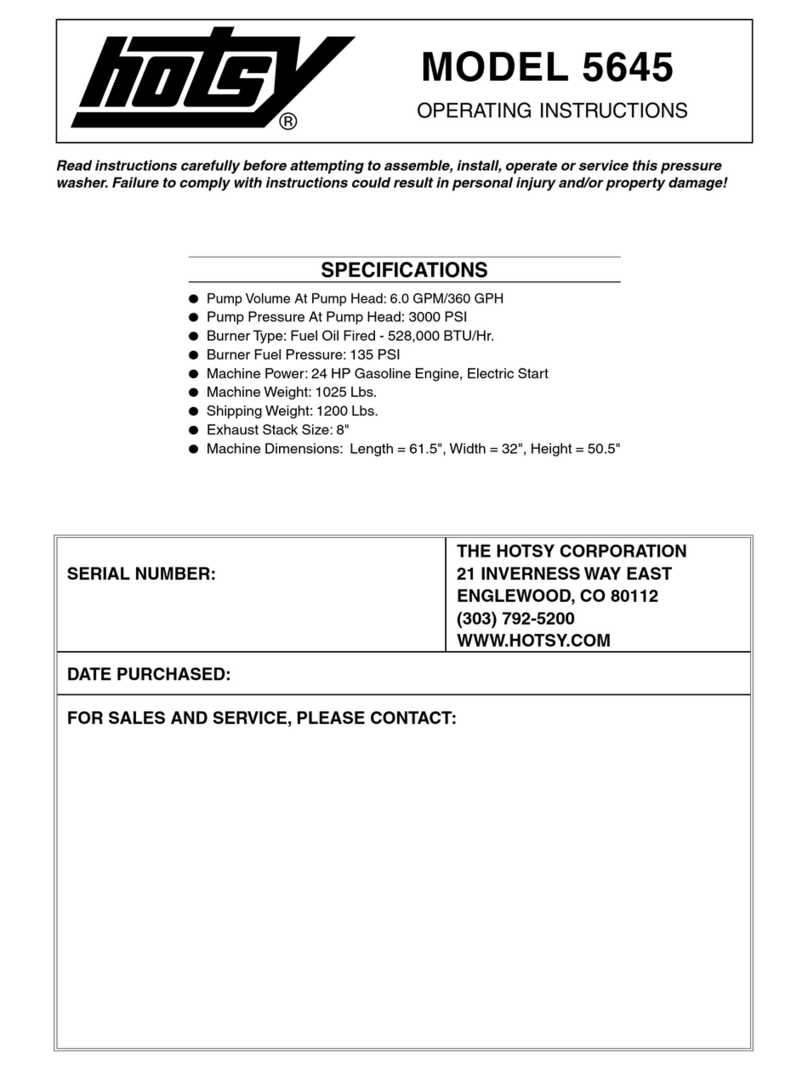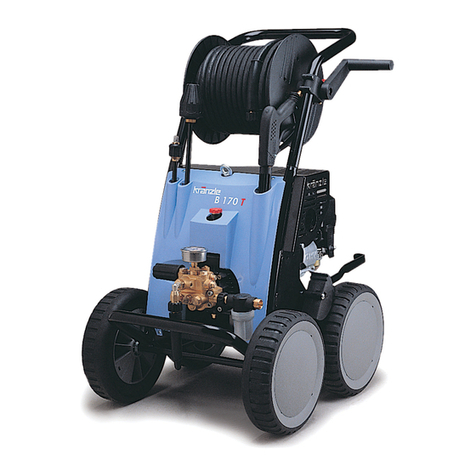
4- ENG
DANGER: RISK TO BREATHING (ASPHYXIATION)
WHAT CAN HAPPEN HOW TO PREVENT IT
• Breathing exhaust fumes will cause
serious injury or death! Engine
exhaust contains carbon monoxide,
anodorlessanddeadlygas.
• Operate pressure washer in a well-
ventilated area. Avoid enclosed areas
suchasgarages,basements,etc.
• Never operate unit in or near a location
occupiedbyhumansoranimals.
• Some cleaning fluids contain
substanceswhichcouldcauseinjury
toskin,eyesorlungs.
• Use only cleaning fluids specifically
recommendedforhighpressurewashers.
Followmanufacturer'srecommendations.
Donot use chlorinebleachor anyother
corrosivecompound.
DANGER: RISK OF FLUID INJECTION AND LACERATION
WHAT CAN HAPPEN HOW TO PREVENT IT
• Yourpressurewasheroperatesatfluid
pressuresandvelocitieshighenough
topenetratehumanandanimal flesh
which could result in amputation or
other serious injury. Leaks caused
byloosefittingsorwornordamaged
hoses can result in injection injuries.
DO NOT TREAT FLUID INJECTION
ASASIMPLE CUT! See aphysician
immediately!
• Inspect the high pressure hose regularly.
Replace the hose immediately if it is
damaged, worn, has melted from
contactingtheengine,orshowsanysigns
of cracks, bubbles, pinholes, or other
leakage. Never grasp a high pressure
hosethatisleakingordamaged.
• Nevertouch,grasporattempttocovera
pinhole or similar water leak on the high
pressure hose. The stream of water IS
underhighpressure and WILLpenetrate
skin.
• Neverplacehandsinfrontofnozzle.
• Directsprayawayfromselfandothers.
• Makesurehoseandfittingsaretightened
and in good condition. Never hold onto
thehoseorfittingsduringoperation.
• Donotallowhosetocontactmuffler.
• Never attach or remove wand or hose
fittingswhilesystemispressurized.
• Whenusingreplacementlancesorguns
with this pressure washer, DO NOT use
a lance and/or lance/gun combination
that is shorter in length than what was
provided with this pressure washer as
measured from the nozzle end of the
lancetotheguntrigger.
• Injuriescan resultifsystempressure
is not reduced before attempting
maintenanceordisassembly.
• To relieve system pressure, shut off
engine,turnoffwatersupplyandpullgun
triggeruntilwaterstopsflowing.
• Use only accessories rated equal to or
higher than the rating of the pressure
washer.
